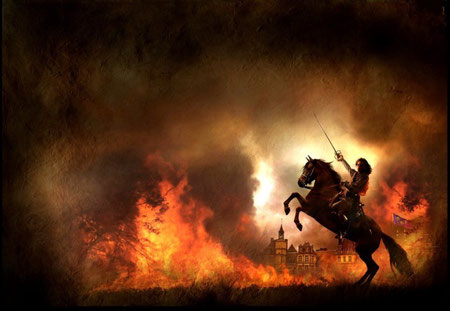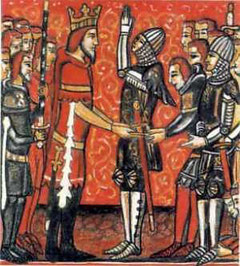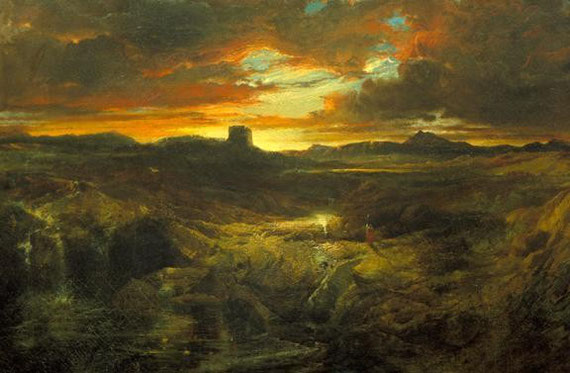

There they stood, ranged along the hillsides, met
To view the last of me, a living frame
For one more picture! in a sheet of flame
I saw them and I knew them all. And yet
Dauntless the slug-horn to my lips I set,
And blew. ‘Childe Roland to the Dark Tower came'. (Robert Browning)
André was always de Roland. There was nothing conscious about it on my part: he simply went his own way with the name I'd given him, and I'd been working on the book for almost a year before spotting he was really Childe Roland and I hadn't made him up at all.
'Childe' was merely the mediaeval term for a knight who had not yet proved himself, and that of course is André, 'the boy' who believes passionately in honour and allows nothing to turn him back from his quest to achieve it. Like his 19th century counterpart he is beset by both doubts and horrors, but pushes blindly and obstinately forward to achieve a final goal he does not himself fully understand. So far he has succeeded in his journey, but then he has not yet come to the Dark Tower. That is in a much later book.
But Browning didn't invent Childe Roland either. He took the idea from Shakespeare's ‘Childe Rowlande to the Dark Tower came' in King Lear, which in turn probably derived from the first and greatest chanson de geste, the French epic poem ‘La Chanson de Roland' which dates from the end of the 11th century.
When I investigated the Chanson de Roland, the parallels became even clearer. Roland was (of course) a faithful knight who swore fealty to Charlemagne, the great King of the Franks and effective founding father of France. Although his early canonization has not been recognized and many of his actions seem questionable to us today, in Christian cultures Charlemagne has acquired an almost mythological state of goodness - and Roland was his most famous supporter against the Saracens in Spain.
This, of course, was with the sword.

Roland is betrayed by his own stepfather into an ambush at the pass of Roncesvalles, when he and his 20,000 men of the rearguard are slaughtered to the man by an enemy force of 400,000. Roland is advised to blow his horn to call Charlemagne's men back to help him, but refuses to bring the King into danger and fights to the death instead. He blows the horn only just before he dies, as a summons to Charlemagne to avenge them after their death. He remains in European culture as a symbol of the perfect, honourable knight.
There is nothing particularly strange about these parallels. Roland is merely an archetype who surfaces from time to time through the centuries, and is enjoying another resurgence now. I recently saw a book in Stephen King's Dark Tower series, and realized he was quite consciously following the same path onto which I'd unwittingly blundered.
But I wonder. When I first saw the magnificent cover Penguin had commissioned for ‘Honour and the Sword' I did just wonder if the artist had remembered Browning's ‘one more picture! in a sheet of flame'. The colour scheme also reminded me of this 19th century painting by Thomas Moran:

The title of the painting?
Childe Roland to the Dark Tower Came...
You can find out lots more about André on his own website devoted to the Chevalier Series - HERE!
Images on this page are copyright iStockphoto and used with permission.
